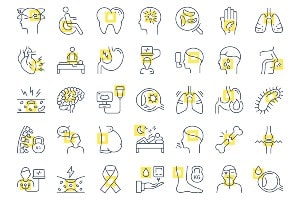About Congenital Absence of Brain (Anencephaly)

Learn about the disease, illness and/or condition Congenital Absence of Brain (Anencephaly) including: symptoms, causes, treatments, contraindications and conditions at ClusterMed.info.
Congenital Absence of Brain (Anencephaly)

| Congenital Absence of Brain (Anencephaly) |
|---|
Congenital Absence of Brain (Anencephaly) InformationAnencephaly facts**Anencephaly facts medical author: Melissa Conrad Stoppler, MD
How common is anencephaly?Anencephaly is one of the most common types of neural tube defect, affecting about 1 in 1,000 pregnancies. However, most of these pregnancies end in miscarriage, so the prevalence of this condition in newborns is much lower. An estimated 1 in 10,000 infants in the United States is born with anencephaly. How do people inherit anencephaly?Most cases of anencephaly are sporadic, which means they occur in people with no history of the disorder in their family. A small percentage of cases have been reported to run in families; however, the condition does not have a clear pattern of inheritance. For parents who have had a child with anencephaly, the risk of having another affected child is increased compared to the risk in the general population. What are the causes, signs, and symptoms of anencephaly?If the neural tube fails to close properly, the developing brain and spinal cord are exposed to the amniotic fluid that surrounds the fetus. This exposure causes the nervous system tissue to break down (degenerate). As a result, people with anencephaly are missing large parts of the brain called the cerebrum and cerebellum. These brain regions are necessary for thinking, hearing, vision, emotion, and coordinating movement. The bones of the skull are also missing or incompletely formed. Almost all babies with anencephaly die before birth or within a few hours or days after birth. What genes are related to anencephaly?Anencephaly is a complex condition that is likely caused by the interaction of multiple genetic and environmental factors. Some of these factors have been identified, but many remain unknown. Changes in dozens of genes may influence the risk of anencephaly. The best-studied of these genes is MTHFR, which provides instructions for making a protein that is involved in processing the B-vitamin folate (also called folic acid or vitamin B9). Changes in other genes related to folate processing and genes involved in the development of the neural tube have also been studied as potential risk factors for anencephaly. However, none of these genes appear to play a major role in causing the condition. Researchers have also examined environmental factors that could contribute to the risk of anencephaly. A shortage (deficiency) of folate appears to play a significant role. Studies have shown that women who take supplements containing this vitamin before they get pregnant and very early in their pregnancy are significantly less likely to have a baby with anencephaly or a related neural tube defect. Other possible risk factors for anencephaly include diabetes mellitus, obesity, exposure to high heat (such as a fever or use of a hot tub or sauna) in early pregnancy, and the use of certain anti-seizure medications during pregnancy. However, it is unclear how these factors may influence the risk of anencephaly. What is anencephaly?Anencephaly is a condition that prevents the normal development of the brain and the bones of the skull. This condition results when a structure called the neural tube fails to close during the first few weeks of embryonic development. The neural tube is a layer of cells that ultimately develops into the brain and spinal cord. Because anencephaly is caused by abnormalities of the neural tube, it is classified as a neural tube defect (NTD). |
More Diseases
A | B | C | D | E | F | G | H | I | J | K | L | M | N | O | P | Q | R | S | T | U | V | W | X | Y | Z
Diseases & Illnesses Definitions Of The Day
- Noncancerous Colloid Thyroid Nodule (Thyroid Nodules) ‐ How are thyroid nodules diagnosed?, Introduction to thyroid nodules …
- Skin, Laser Resurfacing (Laser Resurfacing) ‐ CO2 Laser Resurfacing, Complications of Laser Skin Resurfacing …
- Malignant Fibrous Histiocytoma (Bone Cancer Overview) ‐ Are there any treatments or medications that relieve bone cancer pain? …
- Double Vision ‐ Is it possible to prevent double vision?, What are the symptoms and signs of double vision? …
- Ageusia (Taste Disorders) ‐ Are taste disorders serious?, Can taste disorders be treated? …
- Autism Screening and Diagnosis ‐
- Alpha-fetoprotein Blood Test ‐ In which situations are high blood (serum) levels of AFP used as a tumor marker? …
- Polymyalgia Rheumatica ‐ How do health care professionals make a diagnosis of polymyalgia rheumatica? …
- Stump Appendicitis (Appendicitis) ‐ Appendicitis definition and facts, Are there long-term consequences of appendectomy? …
- Gonorrhea (Gonorrhea In Women) ‐ Gonorrhea facts, How is gonorrhea diagnosed?, What are sexually transmitted diseases (STDs)? …